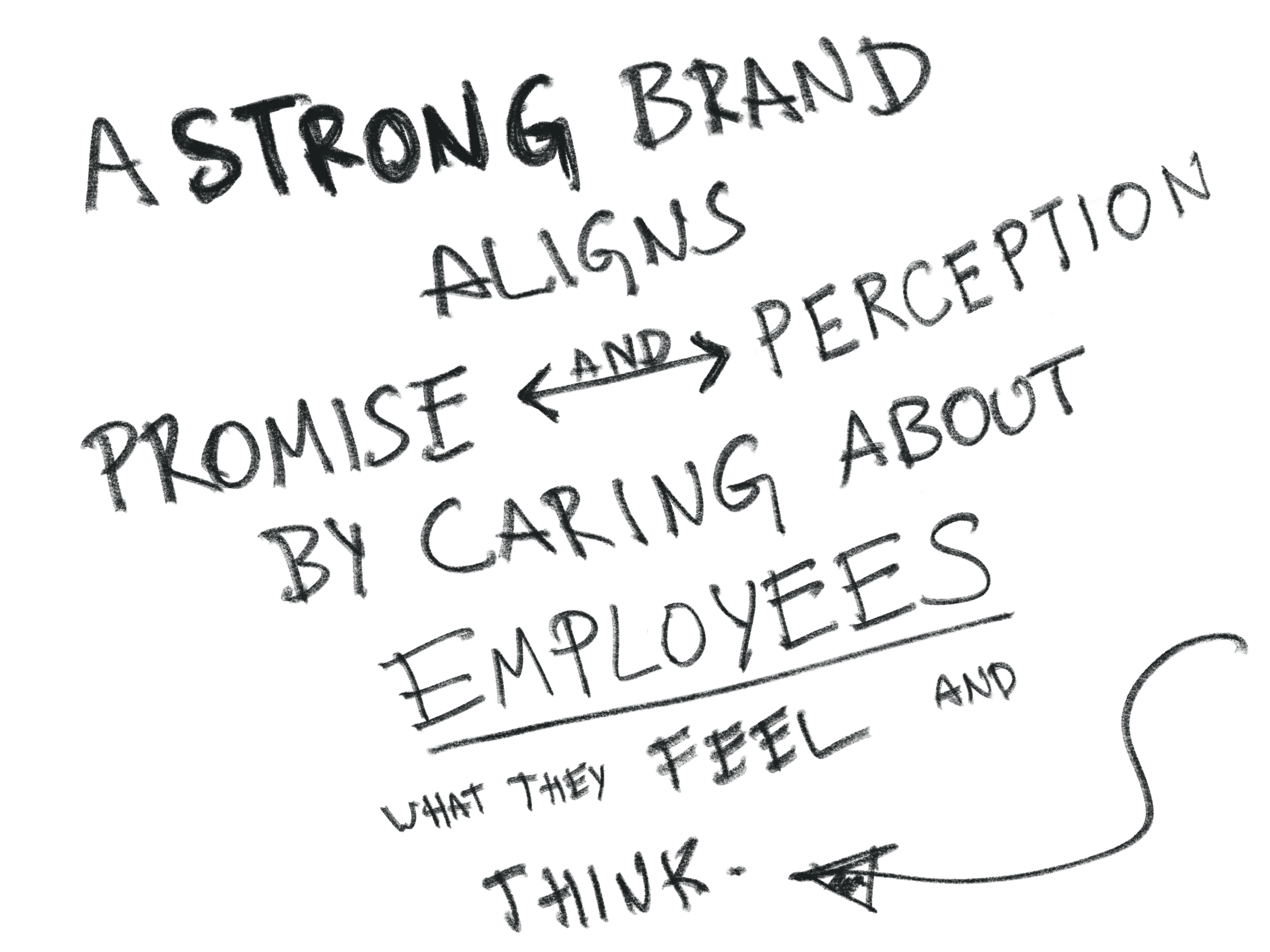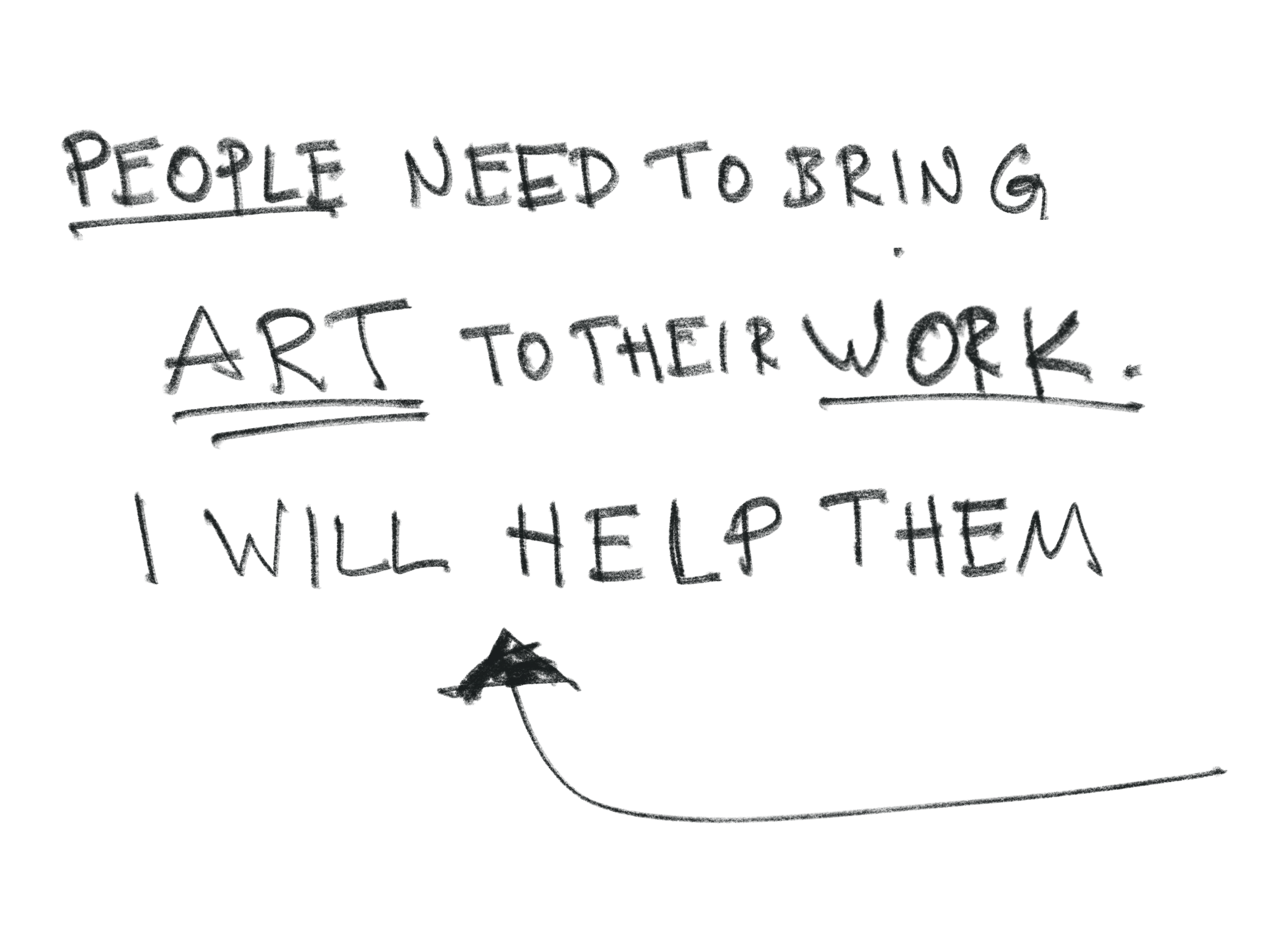
The business world is in desperate need of art. Hear me out.
Why?
Because I see many companies thinking of branding merely as a tool to attract customers.
But it’s not about the customers, at least not at first. A company’s first and most important audience isn’t external—it’s internal. In my experience, far too many companies overlook their most influential audience: their own employees. The truth is, branding isn’t enough if it is just about customers. It has to be about the people who build the company from the inside. If employees don’t embody the brand, the brand doesn’t exist. Best case scenario: it’s just a husk of a brand, a random series of pretty artifacts.
A company promises something, it stands for something other than making money, and the world perceives it in a certain way. That, in a nutshell, is a brand. The stronger the alignment between those two (promise and perception), the stronger the brand. That alignment starts inside the company, not outside. If the people whose work creates the company don’t believe in what the company stands for, neither will the customers. It’s something people feel.
If the organization has a clear and real reason to exist, it connects on an emotional level, with its own members and expresses through them, through their work in a way what words can’t, and the logo and the other brand elements are just the embodiment of the intangible aspects of that particular identity.
This belief is daisy-chained from the mind of the founders, to the work of the employees to the minds of the customers and sometimes even beyond when products find a second or third life. So yes, a brand attracts customers but only inasmuch as they can pick up on that energy. And if they perceive the employees are not connected to it, they may feel wary, they may distrust the brand’s promise.
This is where art comes in. Art is the pinnacle of communication—it’s how we express complex ideas, emotions, and values in a way that transcends language (here’s more on that). When businesses approach branding as an art form, they create something more, much more captivating than a mere cohesive and pretty visual identity; they create a cultural identity, they become a movement.
A brand isn’t what a company says it is—it’s what people experience it to be, it’s what they feel, what they suspect, it’s what they hope. And that experience is shaped by those who work within the company every day. When branding is treated as an artistic, cultural expression rather than just a marketing tool, it becomes something people don’t just see—it’s something they believe in!A brand isn’t what a company says it is—it’s what people experience it to be, it’s what they feel, what they suspect, it’s what they hope. And that experience is shaped by those who work within the company every day. When branding is treated as an artistic, cultural expression rather than just a marketing tool, it becomes something people don’t just see—it’s something they believe in!
Businesses and art are two concepts that aren’t usually considered together, and I think this is a mistake, a mistake so big that I decided to make it my mission to help correct it in as many companies as I can.
Who?
ræch commercial art is a one man consulting firm that helps customers asking them the right questions and creating visual paths to reach cultural alignment.
This is what I do to help organizations
I intervene in three ways:
Propose a Visual Cultural Identity.
Not just a logo, but the whole enchilada.
Workshop
Value Proposition
Teamwork
Write
Case studies
Rants
Analysis








